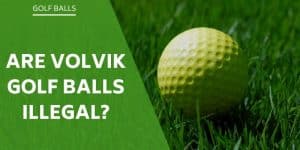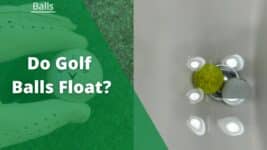No other ball in sport compares to the complexity of the golf ball. One mysterious question for your average golfer relates to the inside of golf balls.
What’s inside a golf ball? The center is made of injection-molded rubber, which compresses when you hit it. Up to four layers of high-density rubber surround the core. Two-layer balls are good for beginners; more layers can increase your control.
However, as technology advances, golf balls march along, which can mean the center of a golf ball changes.
This article will examine golf balls over time to determine their characteristics and how their makeup can affect your game.
In Short: What’s Inside a Modern Golf Ball?
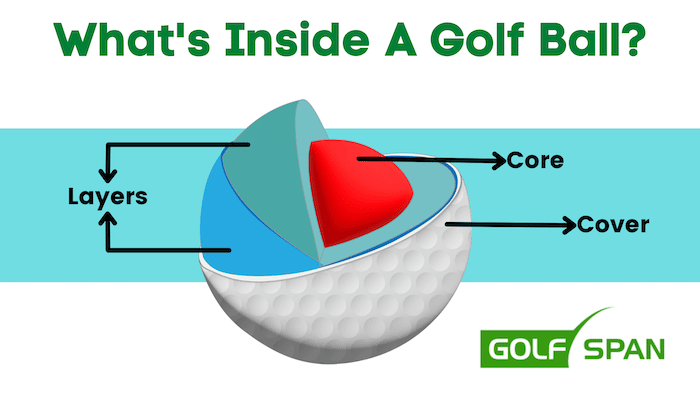
RUBBER is the one-word answer to “What’s inside a golf ball.” Yet some balls also use different materials. The exact makeup of a golf ball will depend on several factors, primarily how many “pieces” it has.
Most commonly, you’ll find that golf balls have these parts:
- Core: Usually constructed from injection-molded rubber to allow for ball compression.
- Layers: These can be made from a few different materials and go between the core and cover of the golf ball. Modern golf balls can have between 0-4 layers, and they’re made from a different density rubber (including liquid) to the core and each other layer.
- Cover: The dimpled exterior of the ball we’re all familiar with.
Related Reading: Best Golf Balls for Average Players
Types of Golf Balls
Today, most golf balls are classified based on the number of layers used in their construction.
While many elements go into a golf ball’s design, the most commonly used to categorize balls include:
- Materials
- Technologies used to make the balls
- Unique constructions (how the elements are combined)
Here are more types of golf balls so you can better decide which is right for you.
One-Piece Balls
These are essentially golf balls designed from one type of material (commonly Surlyn). These types of balls are rare nowadays, especially among skilled golfers, but they can be a good fit for beginners and driving ranges as they are cheap to make. However, we’d recommend buying bulk used balls instead of trying to find one-piece balls new.
Two-Piece Balls
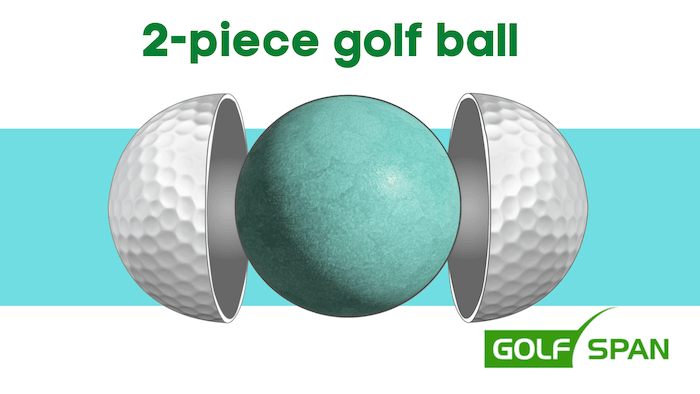
Two-piece golf balls have a single large core, usually made from injection-molded rubber, in the interior wrapped with urethane, Surelyn, or other ionomer covers. These are a good fit for a diverse range of players, but more advanced players may opt for balls with more layers for more control.
Our favorite two-piece ball is TaylorMade Distance+ golf balls.
Three-Piece Balls
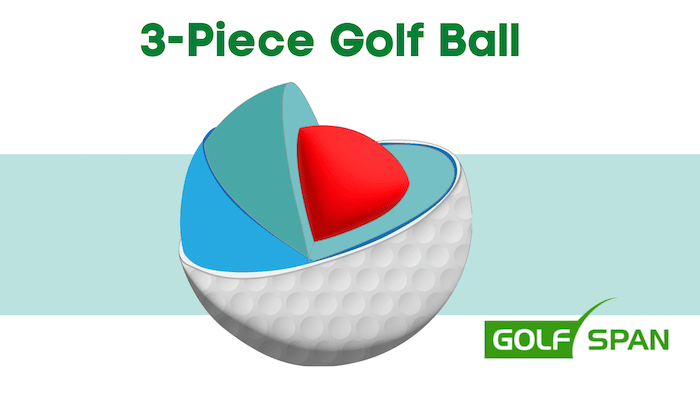
For more advanced players, three-piece balls offer what is often considered the minimum threshold for the ideal golf ball. This may be why they are the most commonly used at the PGA tour.
Three-piece balls are softer than two-piece balls, allowing for more control around the greens and making it easier to hit draws and fades. Each layer is usually made from a different density rubber to the ball’s core and can even be a liquid.
Our favorite three-piece ball is the Bridgestone Golf e12 Contact.
Four-Piece Balls
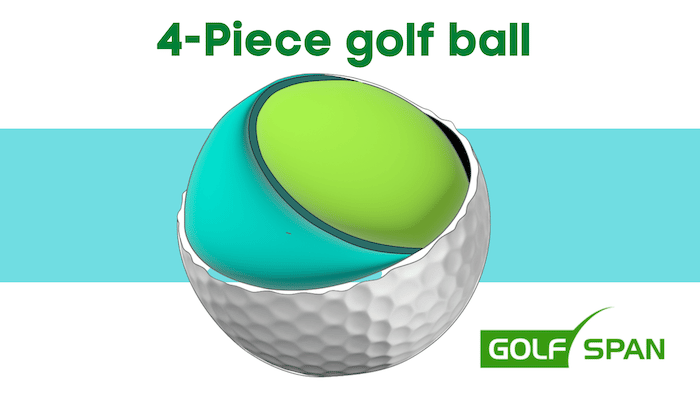
The extra layer on these balls reduces spin. However, some players claim the extra layer doesn’t make much difference. So, you should consider whether you need a premium ball like a four-piece ball.
Our favorite four-piece ball is Titleist Pro V1x Golf Balls
Five-Piece Balls
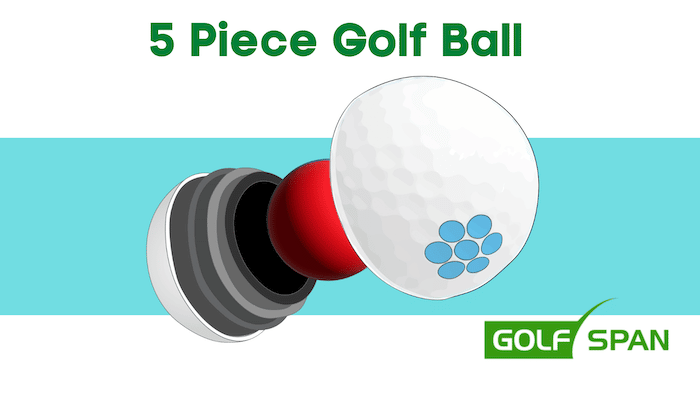
The thinking when it comes to using five-piece balls is similar to that of the four-piece ball. More layers equal more control. These types of balls are designed to suit players in search of an improved alternative to four-piece balls in terms of spin and ball speed.
Our favorite five-piece ball is the TaylorMade 2021 TP5 Golf Ball.
Six-Piece Balls
Six-piece balls are more rare and you may have a hard time finding them. An example of this is the MaxFli U/6 Tour golf ball. Although these are no longer made, there are likely to be newer six-piece balls on the market sooner or later.
Construction of a Golf Ball
It is amazing to see how much the golf ball has evolved, especially considering that the earliest recorded golf balls were made from asymmetrical pieces of wood.
While most have simple aesthetics, modern golf balls result from hundreds of years of innovation and technological changes to make the perfect accessory for improving a player’s game. This is evident not only in the exterior elements of golf balls but also in their interiors.
While earlier versions of the golf balls may have been made entirely of one solid material, progress saw the separation of the interior and exterior as different elements that are combined for maximum efficiency. Across different centuries what was in the interior and exterior varied.
A Short History of the Inside of Golf Balls
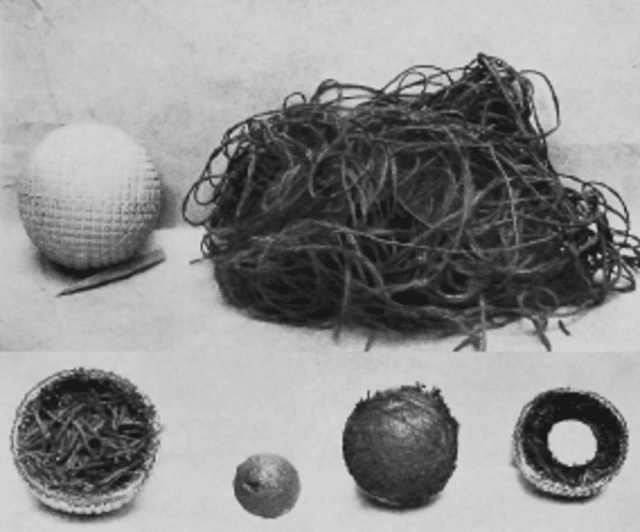
- Wooden Golf Balls: Carved from hardwoods like Boxroot and beech, wooden golf balls were inefficient due to their lack of balance and poor resistance to weather conditions, driving the need for better alternatives.
- Leather Balls with Hair: Made with cowhide leather filled with straw or cow hair, these balls were an improvement over wooden ones but still suffered from water damage.
- Featherie: Constructed from wet goose feathers and leather, the Featherie offered improved flight characteristics but was expensive and still vulnerable to water damage.
- Gutta Percha Golf Balls: Made from the gum of the Gutta Percha tree, these were the first mass-manufactured golf balls, offering better flight, weather resistance, and affordability, enhanced by a Bramble pattern design.
- Modern Golf Ball: Today’s golf balls feature advanced materials like Surlyn and Urethane and are engineered with precise dimple designs and multiple layers to optimize flight, control, and durability for various playing styles.


Image: 1st Dibs Collectibles
Different Types of Covers of Golf Balls
Golf ball covers play a crucial role in the performance characteristics of a golf ball, impacting everything from durability to how it feels upon impact. Let’s explore the different types of materials used in golf ball covers and how they affect the game.
- Surlyn: Surlyn, an ionomer resin developed by DuPont, is one of the most common materials used for golf ball covers. It is highly valued for its durability and resistance to cuts and abrasions, making it ideal for recreational golfers who prioritize longevity in their golf balls. Surlyn covers also promote lower spin rates, helping players achieve longer, straighter drives.
- Urethane: Preferred by professional golfers and low-handicappers, urethane covers offer a softer feel and greater spin control, especially on approach shots and around the greens. This material provides a higher spin rate, which can help skilled players shape their shots more effectively and stop the ball quickly on the green.
- Balata: Although largely phased out in favor of more durable materials, balata was once the go-to cover choice for its extremely soft feel and high spin characteristics. Made from a natural rubber-like material, advanced players favored balata-covered balls for their exceptional performance on precision shots, although they were prone to cuts and scuffs.
Understanding these cover types can help golfers choose a ball that best suits their style of play and improves their overall game. Whether you’re looking for durability, control, or a soft feel, there’s a golf ball cover designed to meet your needs.
Chris's love for golf is only rivaled by his wanderlust. A globetrotter at heart, He’s played courses throughout Europe and Asia and at home in NSW, Australia. With a writing style as smooth as his golf swing, he’ll help you find the right gear to match your skill level and style. You can connect with Chris on LinkedIn.

